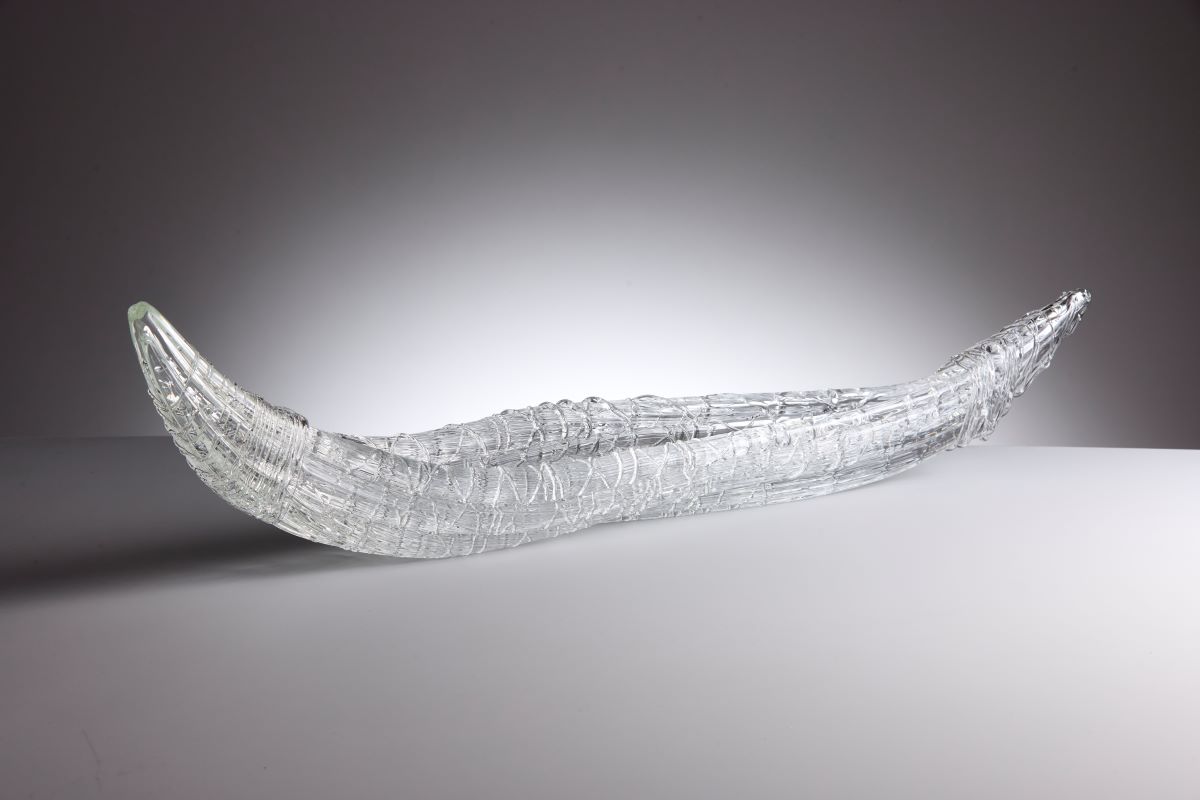
– CATALOGUE ESSAY: IN THE FLICKER OF LIGHT
“I just think it’s so important to pass on cultural knowledge. It’s who you are, it’s where you’re from, it’s part of you, it’s part of me. And the only way that I can do that is through art.”1
— MAREE CLARKE
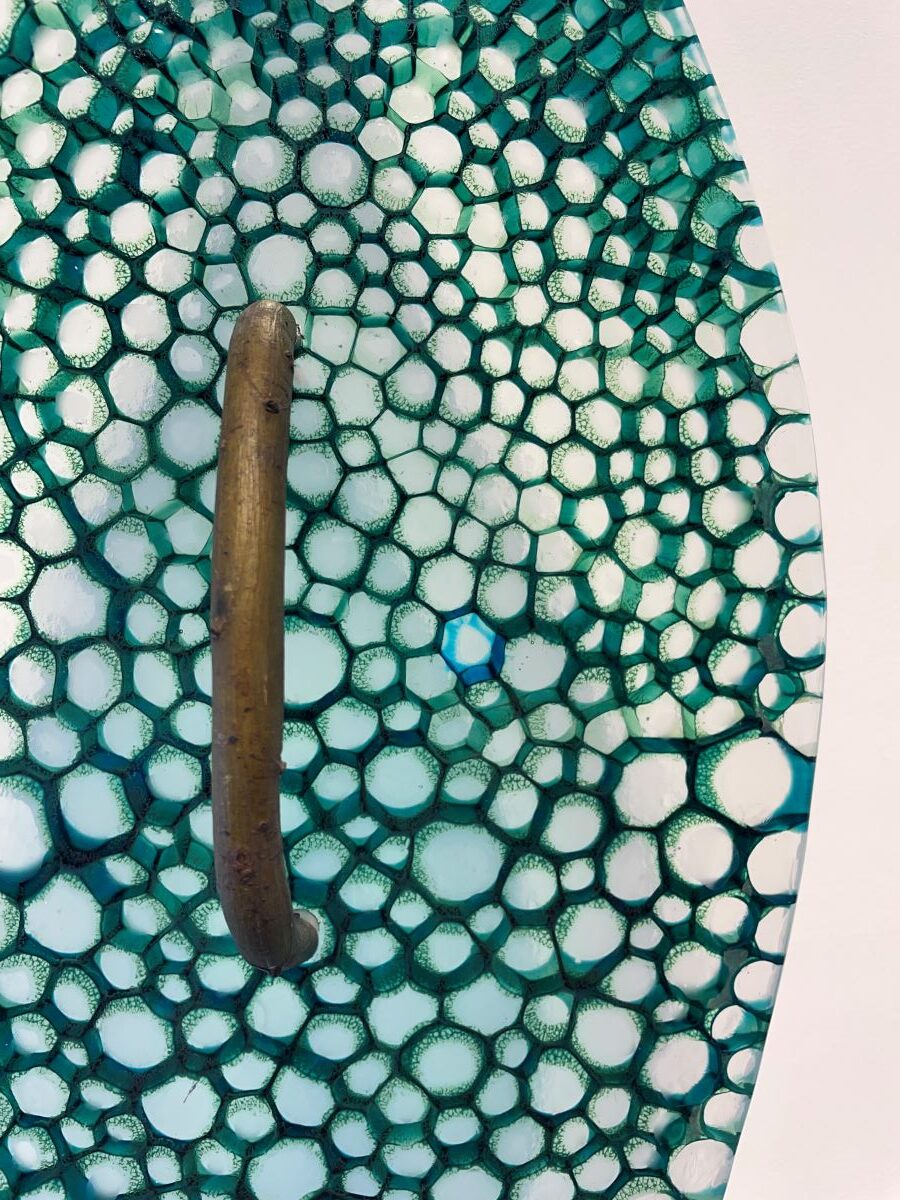
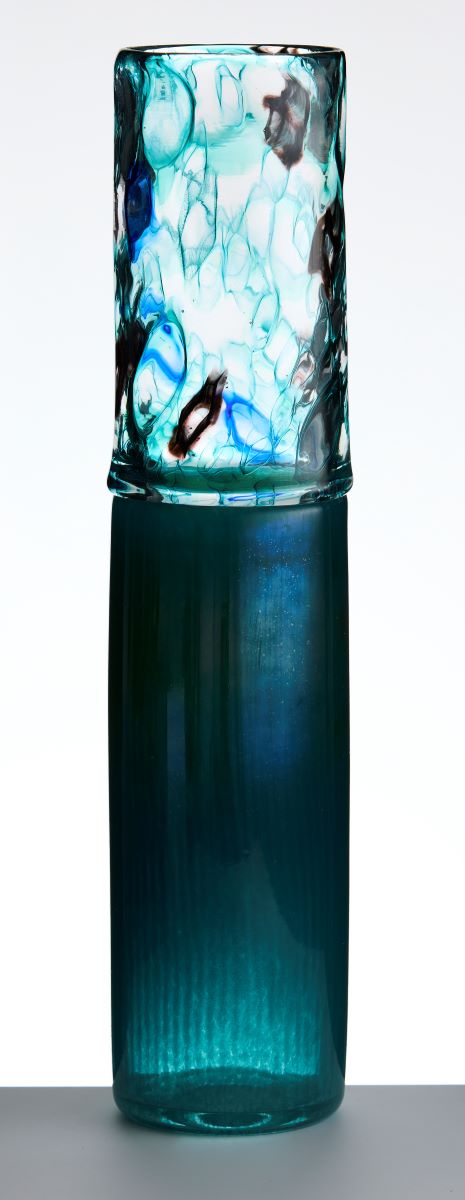

Family is essential to the artistic journey that has consumed Maree Clarke for the last three decades, a journey that is centred in storytelling, intergenerational learning and knowledge sharing.
At the heart of Clarke’s work is the desire to reclaim and showcase the cultural practices of Indigenous people of the southeast, making the shared familial journey that is part of its creation a significant form of future-proofing that will hopefully ensure these practices are never again at risk of lying dormant or being lost entirely. Time is an important component of much of this work—the hours spent gathering and preparing river reeds for example, finding feathers, or collecting kangaroo teeth from roadkill across hundreds of kilometres—and then the meticulous and repetitive labour of dyeing, drilling, threading or weaving. As a result, a personal and interconnected history of moving hands, collaboration and conversation is embedded in much of the artist’s work. It is also an important and meaningful form of cultural restitution.
While celebrated for her jewellery and body adornment, photography, sculpture, video and multimedia installations, Clarke has recently been transfixed by a new medium—glass. From the moment of the creation of her first work in this material, Ancestral Memory I (2O19)—a suspended eel trap of clear glass in 2O sections—she has developed a love affair with glass; captivated by its quixotic nature, the magic of its ability to transform from liquid state to solid form, and by the seemingly endless possibilities it has provided for her work. In In the flicker of light, Clarke concentrates entirely on this medium—calling upon the extraordinary depth of knowledge developed through her years of studying historical cultural material in museum collections and archives to envisage a new body of work that recreates cultural artefacts in glass. As she has said, it is a dream come true:
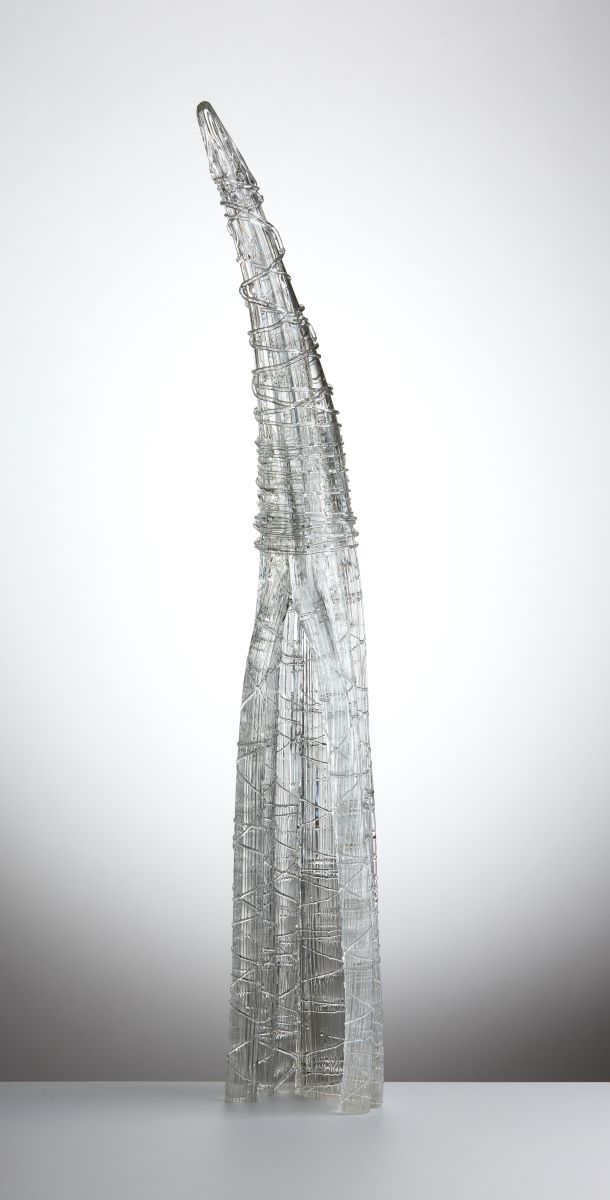
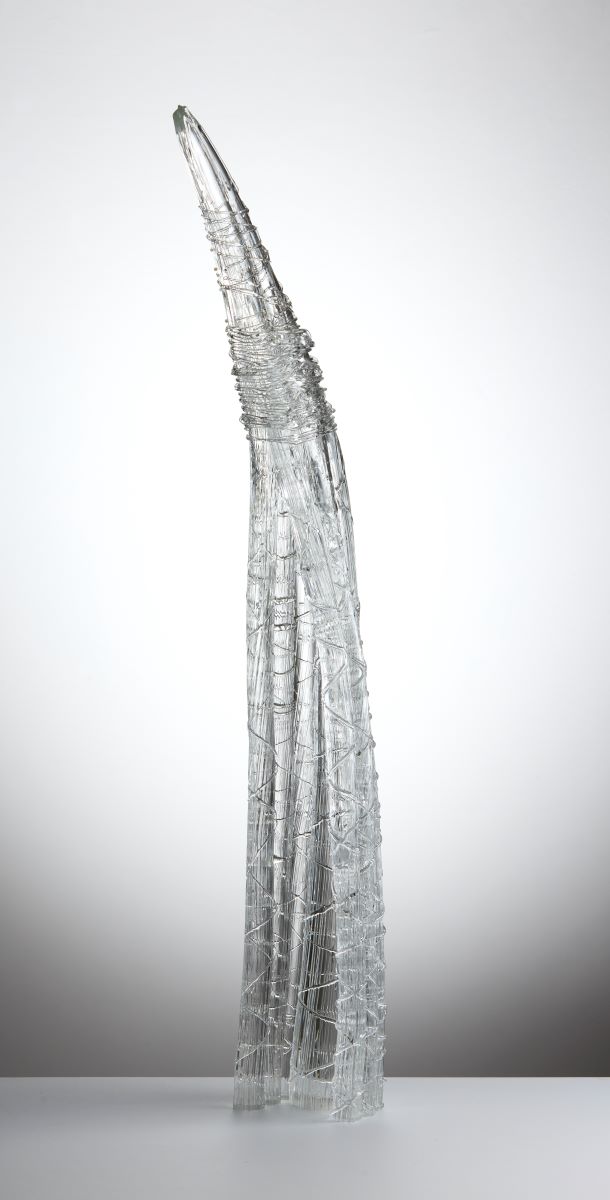
“I just figure if you can dream something, somebody must be able to make that dream. And I’ve been dreaming for a lot of years about making these particular glass shields, and they are just exquisite, and also the glass river reed canoe …”2
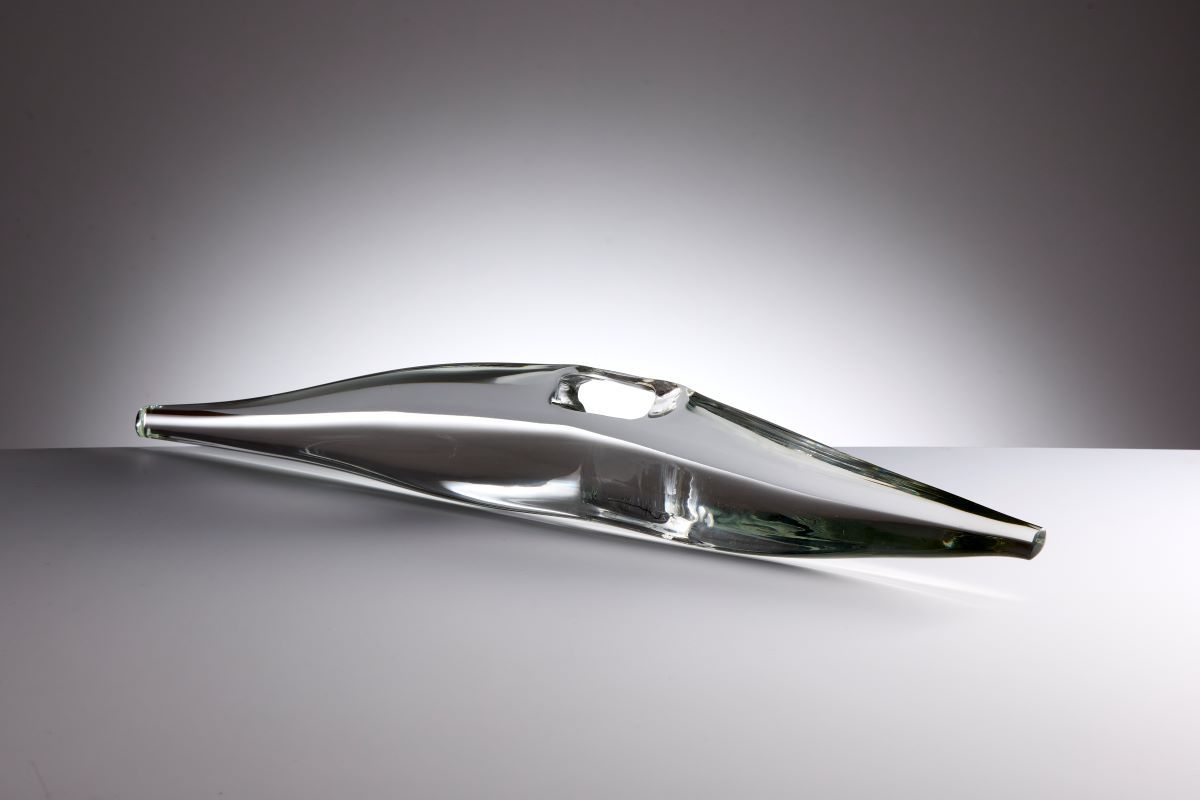
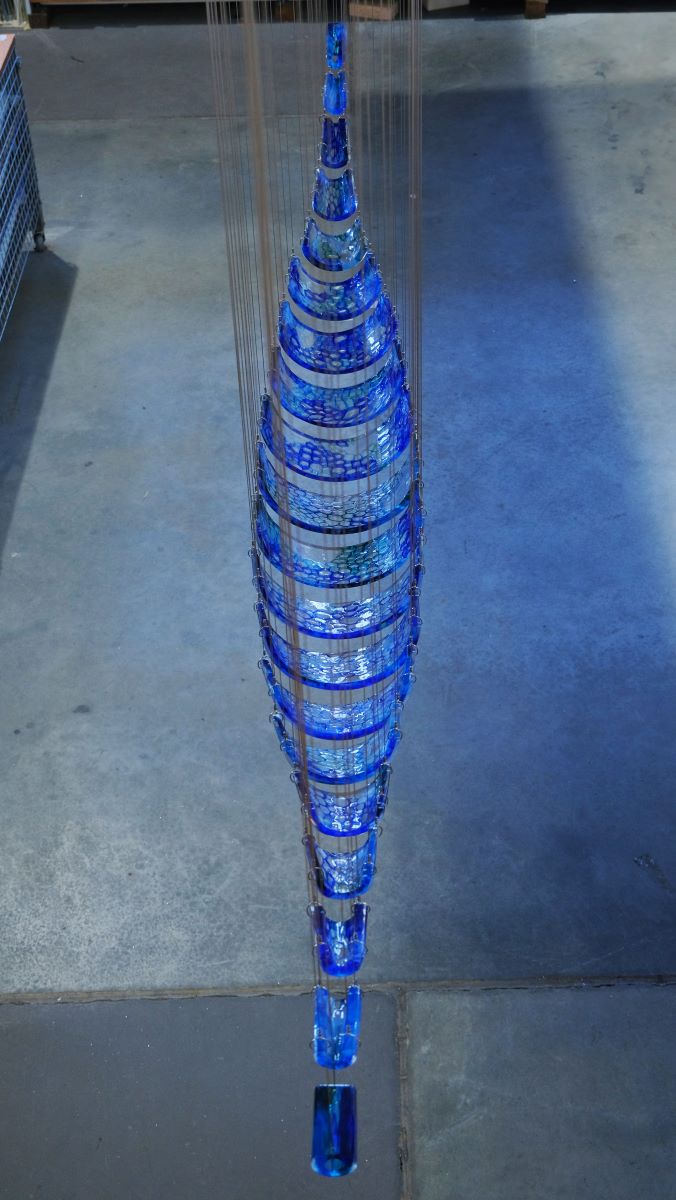
Drawing upon her ongoing relationship with the expert team at Canberra Glassworks who realised Clarke’s first forays in glass (Ancestral Memory I and Ancestral Memory II, both 2O19) and a period of experimentation and development during a pivotal residency at the Museum of Glass in Tacoma, and the Pilchuck Glass School, both in Washington, USA, In the flicker of light brings together new bodies of work that re-think and re-present cultural materials and objects in exciting new ways. Clarke’s recent collaboration with the Melbourne Histology Platform in the School of Biomedical Sciences at the University of Melbourne is central to the exhibition. This work resulted in a series of microscopic images of the cellular structures of the roots and stems of river reeds,3 which appear in the exhibition as both the evocative ‘bubbled’ components of the elegant, coloured-glass river reed standing forms, and the extraordinary, suspended canoe. The material and literal strength of river reeds is also powerfully captured in Clarke’s glass river reed canoe forms, which poetically convey the intricacy and skill of their making (again, the result of moving hands working in collaboration), performed in the service of use.
Part of the eternal fascination of glass is its ability to embody the possibility of breakage, alongside its incredible utility and strength. This compelling duality is central to the success and power of Clarke’s mesmerising series of glass shields; objects which functioned historically as both a form of bodily protection and dangerous weapon. As such, these beautiful sculptural objects speak of the fragility of Indigenous knowledge and ways of being and of the extraordinary power and resilience of First Nations culture.
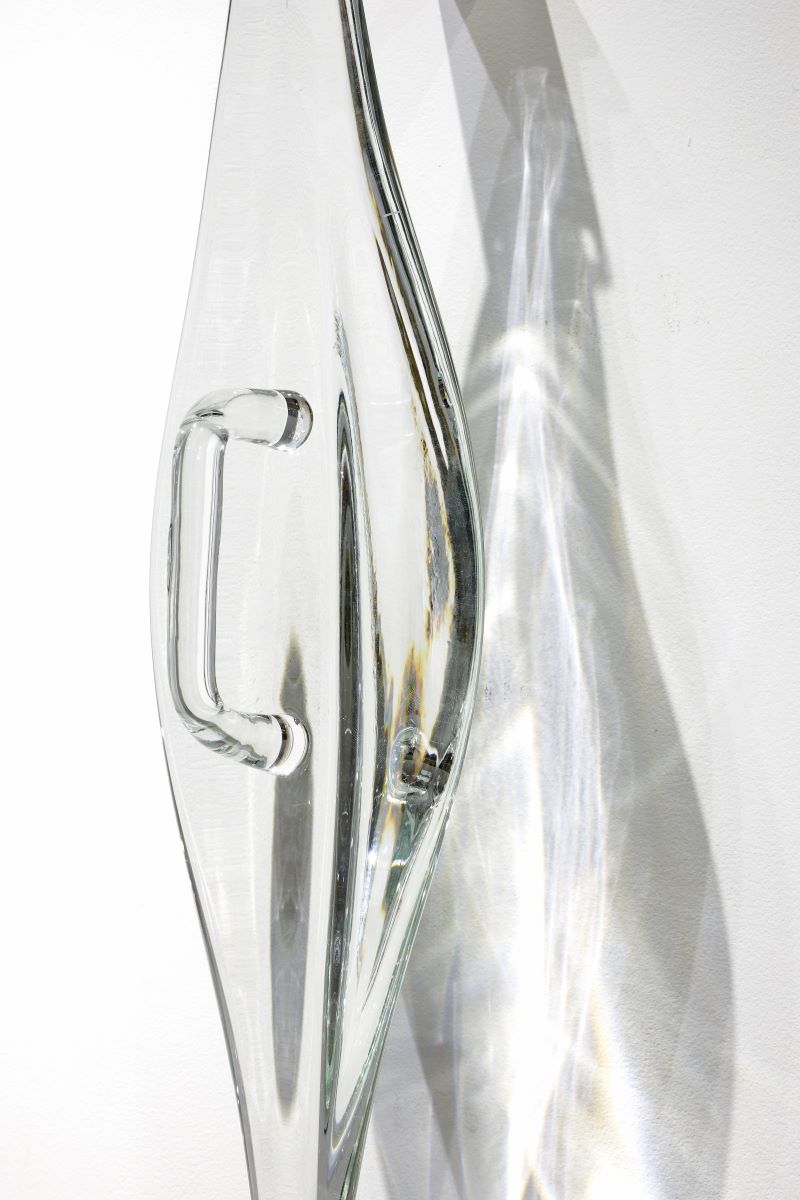
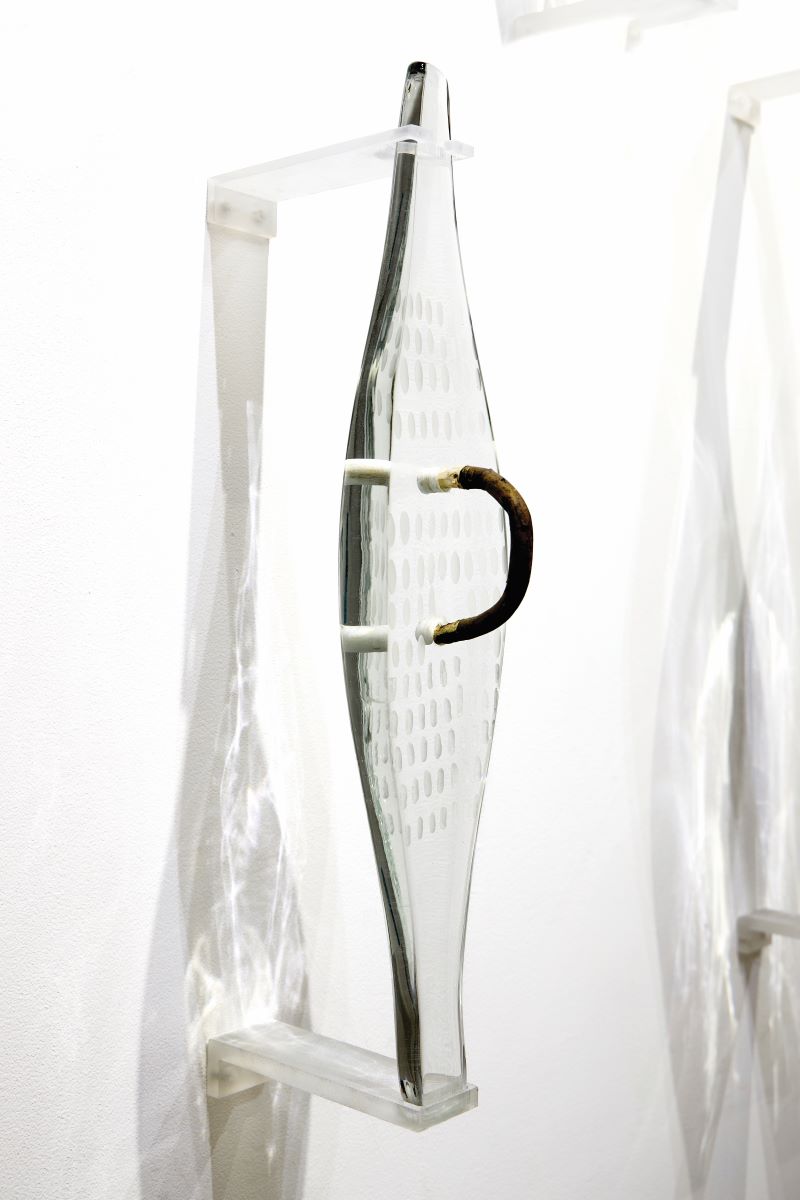

Like the chimerical nature of glass, Clarke remains open and receptive to a kind of imaginative shapeshifting within her work, and it is from this ability and practice that she so ably facilitates a continuation of cultural stories and memory. As she has stated:
“We are one of the oldest continuing living cultures in the world, and if we don’t change and adapt, culture will die. That’s why I love doing things like the glass shields, the glass canoe. It’s still cultural practice—using different mediums—but still telling the same stories.”4
KELLY GELLATLY
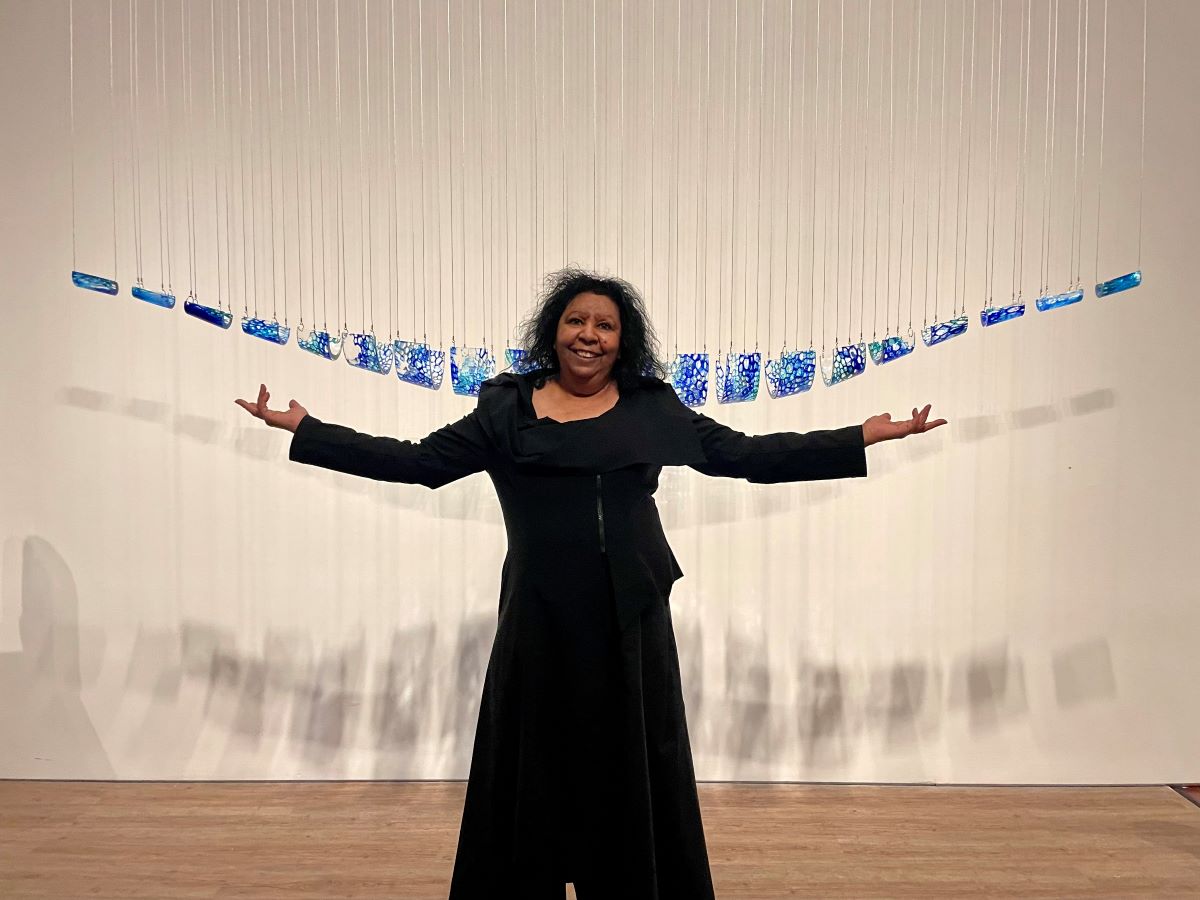
1 Maree Clarke quoted in “Maree Clarke: Bunjalika”, Melbourne Museum. Video shown as part of the artist’s Museum of Glass Visiting Artist Talk, Museum of Glass, Tacoma, Washington, USA on 2O May 2O23, https://www.youtube.com/watch?v=j9W_7YGgk3E.
2 Maree Clarke, Museum of Glass Visiting Artist Talk.
3 These microscopic images were first seen in Clarke’s work now you see me: seeing the invisible #1 (2O23) which was part of the exhibition Between Waves at the Australian Centre for Contemporary Art (ACCA), Melbourne, 1 July–3 September 2O23. Curator: Jessica Clark.
4 Maree Clarke, Museum of Glass Visiting Artist Talk.
Get the latest updates & news direct to your inbox…




